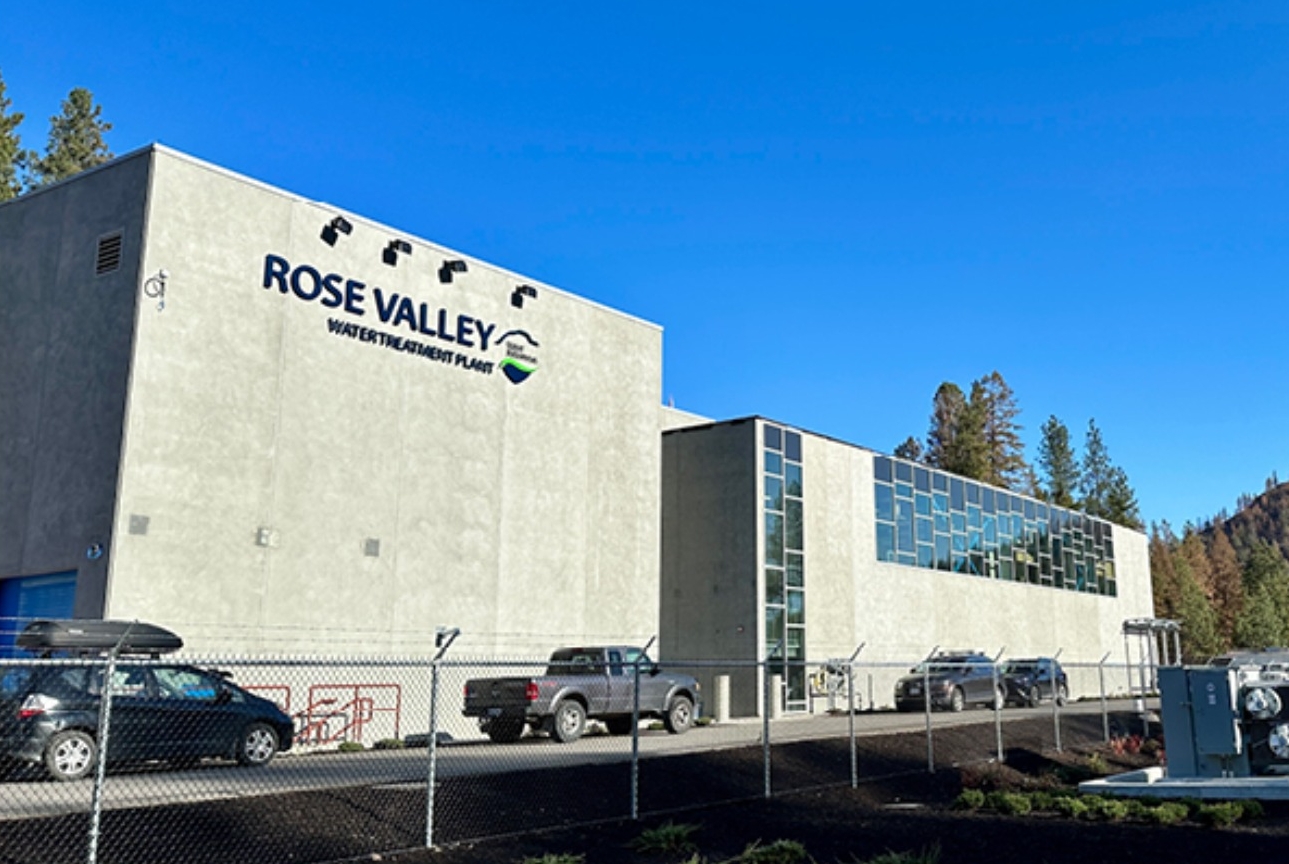The quality of water from the aging Rose Valley Reservoir into the Rose Valley Water Treatment Plant (RVWTP) distribution system unexpectedly resulted in increased manganese to water users. Factors such as recent extreme heat directly affecting the quality of water in the reservoir, sediment accumulation deep in the watershed and through intake pipes, and continued effects of wildfire recovery affecting the reservoir contributed to the unexpected increase in manganese and subsequent discolored water.
Manganese reduced in Rose Valley Reservoir

Based on several solutions implemented to date, manganese levels have decreased, resulting in clearer water to most service areas. A chemical oxidant, called hypochlorite, which is a form of chlorine, has been used to help remove escalated levels of manganese from the water. This type of chlorine is used across Canada to treat drinking water. This treatment began Aug. 2, 2024, and as of Aug. 4, water colour had started to clear throughout the distribution system. Depending on where residents live in the Rose Valley Water Service Area, their water colour may have taken a few more days to clear. We sincerely thank the community for their understanding as the City and Interior Health work together to monitor and make the necessary adjustments both in the short and long term.
The community can have full confidence that the new plant is working as it should. Without the plant, this water quality from the reservoir would not be mitigated as rapidly or effectively.
A tremendous amount of work was being done at the technical level to determine the source of the problem so correct measures could be implemented as correctly and quickly as possible. We sincerely thank water users for their understanding while the City and its water expert team worked with Interior Health to address the issue and implement solutions.
Current advisories - one
Former West Kelowna Estates Area, which remains unchanged from last update
· City test results showed that two sampling sites in Zone 2 of the former West Kelowna Estates System, marginally exceeded the maximum levels for manganese; testing and analyses are continuing, and results will be reported once completed.
· A precautionary, isolated Water Quality Advisory remains in effect for watermain flushing in Zone 2; see the Water Quality Advisory map to determine if you live in the watermain flushing area.
· For more information on manganese, residents can refer to Health Canada’s dedicated webpage; Health Canada notes that formula reconstituted with tap water can be an source of exposure to manganese for bottle-fed infants. In areas where the level of manganese in drinking water is above the guideline, it is recommended that an alternative source of water be used to reconstitute infant formula; parents with infants that are reconstituting infant formula should choose an alternative source of water.
· An alternative source of drinking water – the bulk filling station at Asquith and Shannon Lake Roads – is available. Please note the Shannon Lake Active Transportation Corridor construction, traffic pattern changes, and detours remain in effect, and bring clean bottles for filling.
What’s next
The City continues its increased monitoring, sampling and testing throughout the system and should manganese levels increase again in the coming days or weeks, due to warmer summer temperatures and/or other conditions, other updates will be provided, and solutions will be implemented.
A notice to rescind the current water quality advisory for watermain flushing in the former West Kelowna Estates Area will be issued once the flushing and testing program is completed.
As the City continues to recover from the unprecedented Do Not Consume Order from the McDougall Creek Wildfire, this event has demonstrated that the aging reservoir will need to be addressed more rapidly. The better the water is coming from the reservoir into the plant will result in a more consistent treatment process, reliable chemical expenditures and a better output of water to users. With such a large infrastructure system, confirming the root cause of the problem took time, and remediation options to address the reservoir are both short- and long-term priorities.
Technical options are being implemented over the next several months, such as:
· Conducting a series of bench testing that will help guide next steps
· Continually aerating the water - with an old reservoir system, keeping oxygen in the water will help
· Greater examination of intake pipes and where water is being drawn from to help minimize root causes stemming from the reservoir
Find more information
As new information is available, the City of West Kelowna will provide updates through its eNotification System to the public and the media and on its website at westkelownacity.ca/waterquality and westkelownacity.ca/news. Please remain signed up to receive City news and alerts directly to your inbox and encourage family, friends and neighbours to sign up at westkelownacity.ca/subscribe.
For answers to frequently asked questions from the City, please visit:
· FAQs – Rose Valley Water Service Area – Water_Quality – Summer_2024_Update
For more information on manganese, from Health Canada, please visit:
· Water Talk - Manganese in drinking water - Canada.ca
HealthLink BC also provides information on manganese in drinking water at: